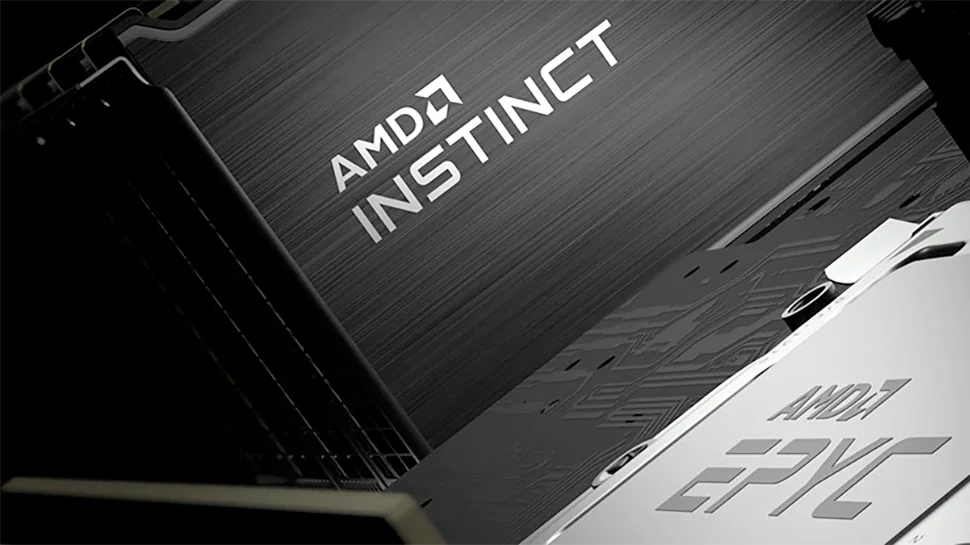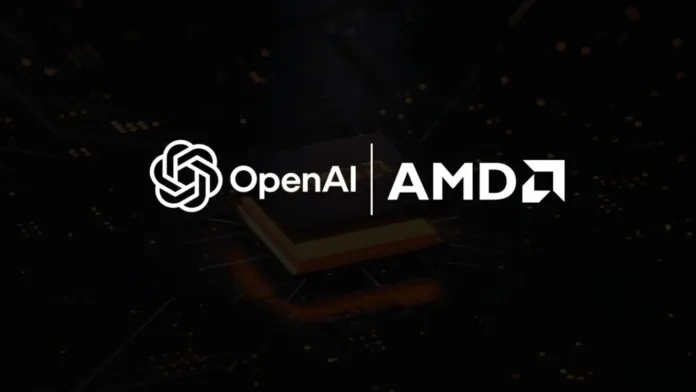Table of Contents
AMD and OpenAI Partnership: A 6 Gigawatt Leap for AI Infrastructure
Squaredtech reports that AMD and OpenAI have signed a landmark agreement to deploy 6 gigawatts of AMD Instinct GPUs, forming one of the largest AI infrastructure deals in history.
The partnership represents a deep multi-year and multi-generation collaboration aimed at accelerating OpenAI’s next wave of large-scale artificial intelligence systems.
The announcement, made on October 6, 2025, from Santa Clara, California, highlights a new phase of strategic alignment between AMD’s hardware leadership and OpenAI’s software innovation.
The initial deployment will begin in the second half of 2026 with 1 gigawatt of AMD Instinct MI450 Series GPUs, followed by incremental expansions that will scale up to 6 gigawatts across several years.
A New Era of Compute Collaboration
AMD’s proven performance in high-performance computing (HPC) and AI-optimized GPUs has positioned the company as a key challenger in a market long dominated by Nvidia.
By partnering with OpenAI, AMD gains a massive platform to showcase its technology’s scalability and reliability for training and running generative AI models at global scale.
OpenAI, meanwhile, gains a diversified hardware supply chain — an important strategic move in a time when GPU availability and efficiency define the pace of AI research.
Squaredtech analysis suggests this partnership gives OpenAI a more cost-efficient and flexible alternative to relying exclusively on Nvidia H100 or H200 chips.
Under the agreement, AMD will serve as a core compute partner for OpenAI’s infrastructure, beginning with rack-scale AI solutions built around the Instinct MI450 architecture.
Future generations of AMD GPUs, including successors to the MI450, will follow as OpenAI expands its compute needs for upcoming GPT models and real-time multimodal systems.
Both companies will share technical expertise and co-develop optimization tools to align their hardware and software roadmaps, marking a significant milestone in cross-industry collaboration.
🧮 Comparison Table: AMD GPU Evolution for AI
| GPU Model | Launch Year | Architecture | AI Performance (FP8 TFLOPs) | Memory | Power Efficiency |
|---|---|---|---|---|---|
| MI300X | 2024 | CDNA3 | ~1,600 | 192GB HBM3 | Moderate |
| MI350X | 2025 | Enhanced CDNA3 | ~2,000 | 256GB HBM3e | High |
| MI450 | 2026 (planned) | CDNA4 | ~3,500+ | 512GB HBM4 | Very High |
Source: Squaredtech research based on AMD technical disclosures and AI market data.

The new MI450 GPUs will mark AMD’s shift into next-generation architectures that prioritize energy efficiency and scaling capacity, enabling OpenAI to train models at unprecedented speed.
Squaredtech analysts estimate that with 6 gigawatts of AMD GPUs, OpenAI could achieve compute power exceeding ten times its 2024 infrastructure capacity.
Strategic and Financial Implications
Under this definitive agreement, AMD has granted OpenAI a warrant for up to 160 million shares of AMD common stock, vested based on performance milestones.
The first tranche activates when the initial 1 gigawatt deployment begins in 2026, with further tranches linked to scaling progress toward the 6 gigawatt target.
The warrant structure ensures that both companies remain strategically aligned — OpenAI benefits from hardware expansion while AMD gains direct participation in OpenAI’s commercial success.
Jean Hu, AMD’s Executive Vice President and CFO, emphasized that the deal is expected to generate tens of billions in revenue over its lifetime.
According to Hu, the partnership will be highly accretive to AMD’s non-GAAP earnings-per-share, creating measurable long-term value for shareholders.
From OpenAI’s perspective, this collaboration addresses one of the industry’s biggest bottlenecks: compute availability.
CEO Sam Altman noted that AMD’s leadership in chip manufacturing will allow OpenAI to “build the compute capacity needed to realize AI’s full potential.”
This sentiment was echoed by Greg Brockman, OpenAI’s co-founder and President, who said the partnership “allows us to scale AI tools that benefit people everywhere.”
Insight: The Power Race in AI Infrastructure
The AMD–OpenAI partnership is more than a supply agreement — it represents a strategic shift in the AI hardware power race.
For years, Nvidia has dominated this segment with its CUDA ecosystem and H100 GPUs, commanding most large-scale AI clusters.
However, AMD’s Instinct series has been steadily gaining traction.
By collaborating directly with OpenAI — the creator of ChatGPT, DALL·E, and Codex — AMD secures both visibility and validation at a scale few chipmakers achieve.
This partnership also signals OpenAI’s intent to diversify its compute sources and reduce dependency on a single GPU vendor.
Squaredtech analysts interpret this move as an important long-term hedge against supply constraints and pricing volatility that have plagued the AI chip market.
📊 Chart: Projected AMD GPU Deployment Timeline for OpenAI (2026–2030)
| Year | Deployment Phase | Estimated GPU Power (GW) | AI Model Generation Supported |
|---|---|---|---|
| 2026 | Initial MI450 rollout | 1 GW | GPT-6 Pretraining |
| 2027 | Expansion to MI450 clusters | 2 GW | GPT-6.5 and multimodal systems |
| 2028 | Mid-phase scaling | 3.5 GW | GPT-7 early training |
| 2029 | Full deployment phase | 5 GW | GPT-7 and simulation models |
| 2030 | Complete 6 GW infrastructure | 6 GW | Real-time global AI inference |
Projection created by Squaredtech.co based on disclosed timelines and market analysis.
AMD’s Competitive Edge and Market Outlook
With the launch of the MI450 GPUs, AMD’s CDNA4 architecture will deliver major upgrades in parallel compute density, interconnect speed, and thermal efficiency.
These advances are critical for training large-scale transformer models, which now require trillions of parameters and continuous inference updates.
AMD’s multi-chip module design and HBM4 memory integration provide faster data throughput, reducing latency during AI model training.
This makes AMD’s GPUs well-suited for OpenAI’s expanding product line, from ChatGPT Pro to text-to-video models and autonomous simulation frameworks.
For AMD, this partnership is a validation of its long-term investment in data center technology.
The company’s strategy of competing through performance-per-watt advantages and flexible integration gives it a competitive foothold in the AI sector traditionally ruled by Nvidia.
Squaredtech projects that if AMD maintains this momentum, it could capture 20–25% of the AI GPU market by 2028, up from less than 10% in 2024.
The Broader Impact on AI and Global Compute Infrastructure
The AMD–OpenAI deal sets a precedent for how AI research institutions, startups, and cloud providers may structure future hardware partnerships.
As generative AI systems expand, the global demand for energy-efficient compute and scalable GPU clusters will grow exponentially.
By investing early in a 6 gigawatt infrastructure, OpenAI ensures it can continue leading innovation in AI generation and deployment.
AMD, in return, strengthens its foothold in high-value compute contracts while driving adoption for its entire Instinct GPU ecosystem.
Squaredtech expects this collaboration to accelerate AI democratization, allowing developers, enterprises, and consumers to access more powerful and efficient tools built on this infrastructure.
Conclusion: A New AI Power Partnership for the Decade
The AMD and OpenAI partnership is more than a technical collaboration — it’s a signal that the AI hardware frontier is entering a new phase of scale and competition.
By combining AMD’s hardware expertise with OpenAI’s software innovation, the two companies are laying the foundation for a future where AI compute power rivals national energy grids.
From a market standpoint, this partnership could reshape GPU economics, redefine cloud deployment standards, and set a new benchmark for what large-scale AI systems can achieve.
Squaredtech views this as a historic turning point — one where innovation, strategic alignment, and competition converge to power the next decade of artificial intelligence.
Stay Updated: Artificial Intelligence – Money Talks


